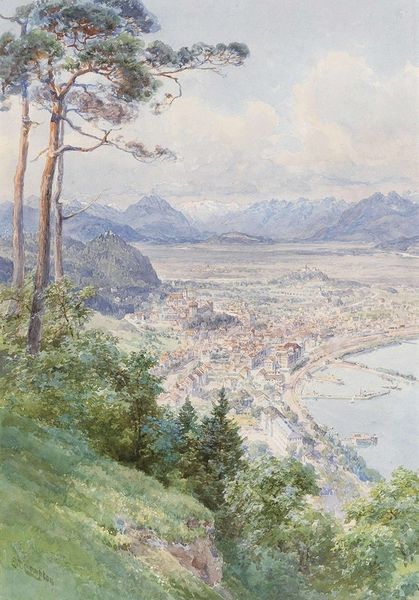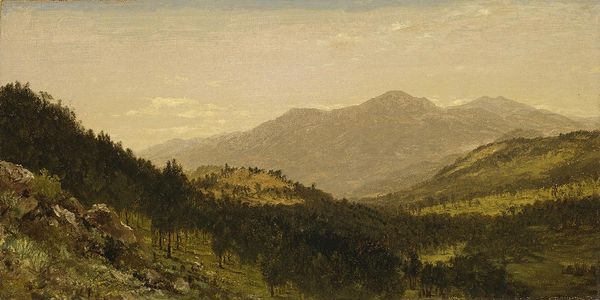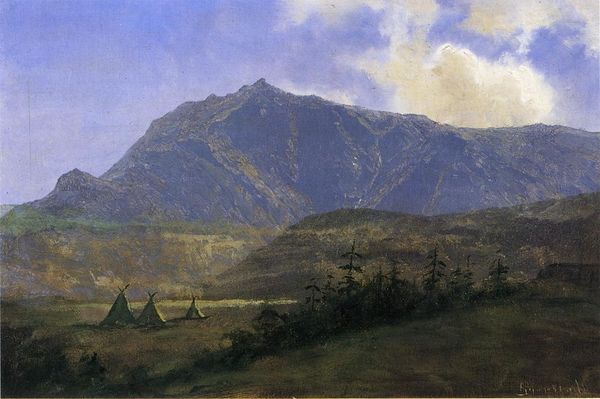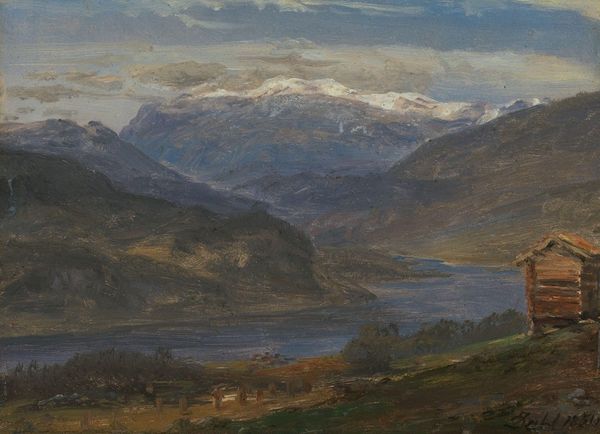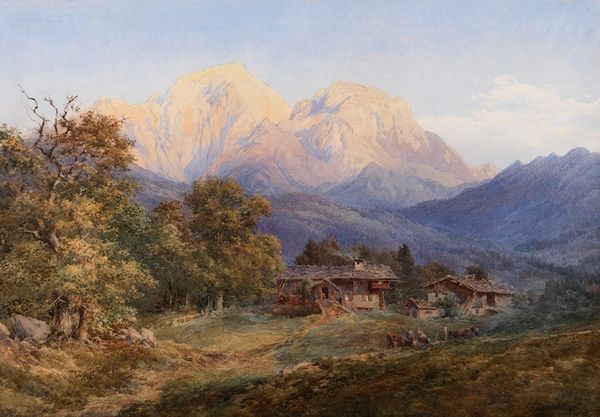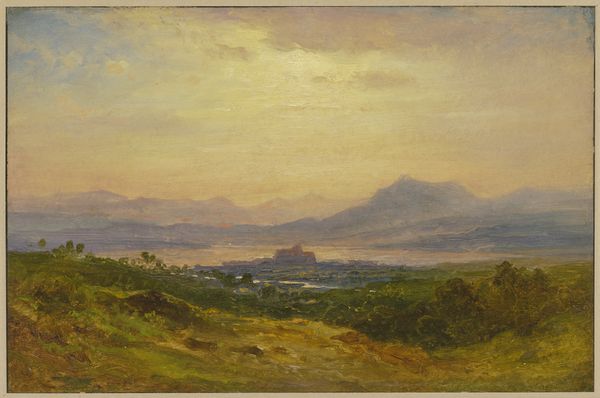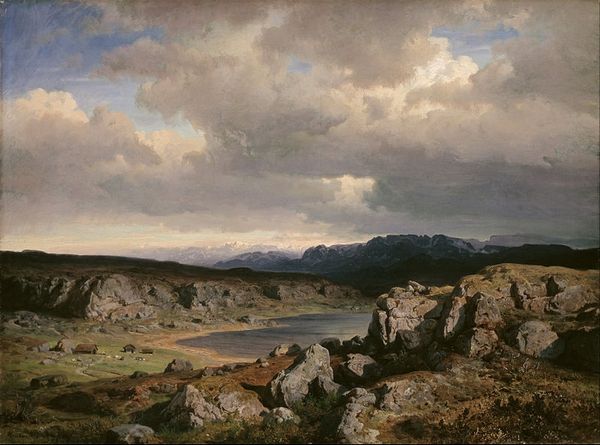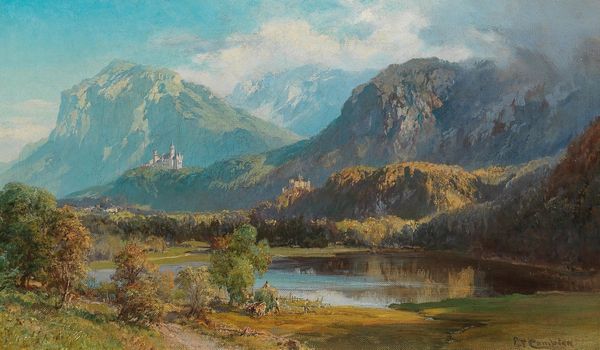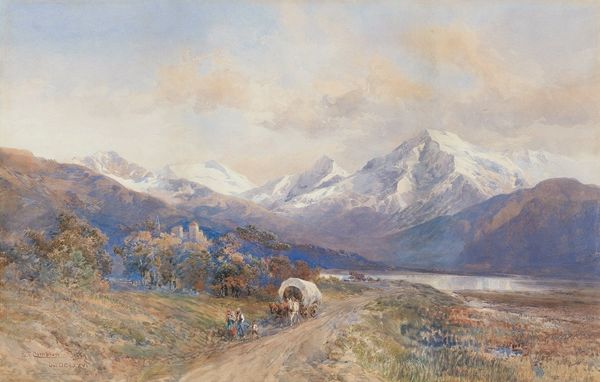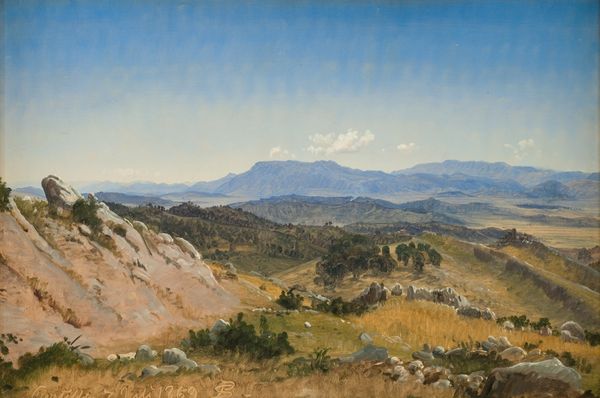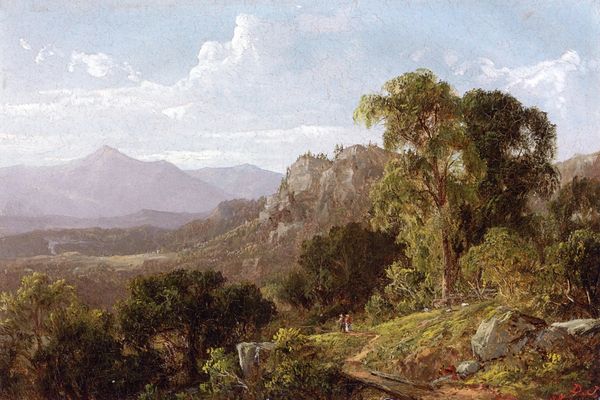
Copyright: Public Domain: Artvee
Edward Theodore Compton created this watercolour landscape, "Blick auf Klagenfurt vor den Bergzügen der Karawanken," sometime between 1849 and 1921. The composition is structured by a sweeping vista that leads the eye from the foreground's textured hillside, down through the verdant valley, to the distant, snow-capped Karawanken mountain range. Compton’s use of watercolour lends the scene a hazy atmosphere. The subdued palette of greens, browns, and blues works in tandem with the atmospheric perspective to create a sense of depth. The two slender trees in the foreground serve as both a repoussoir device, framing the scene, and a structural element, their verticality contrasting with the horizontal expanse of the valley. The artwork engages with the picturesque tradition, framing nature as a harmonious and visually pleasing scene. Yet, through its detailed rendering of topographical features, the painting also speaks to a scientific impulse to document and classify the natural world. In doing so, Compton invites us to consider the relationship between observation and artistic interpretation.
Comments
No comments
Be the first to comment and join the conversation on the ultimate creative platform.
